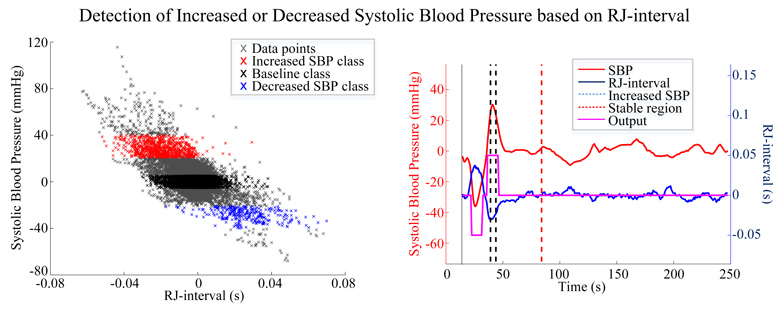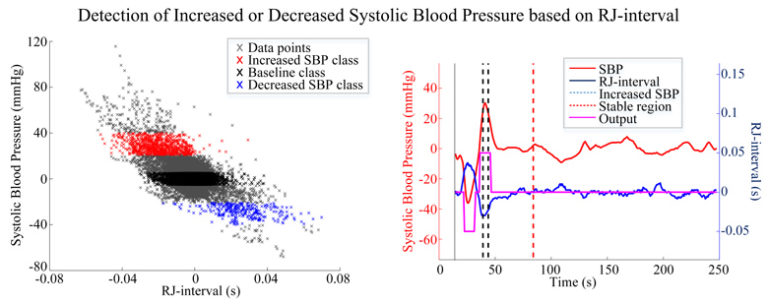
Effective management of neurogenic orthostatic hypotension and supine hypertension (SH-OH) due autonomic failure requires a frequent and timely adjustment of medication throughout the day to maintain the blood pressure (BP) within the normal range, i.e., an accurate depiction of BP is a key prerequisite of effective management. One of the emerging technologies that provide one’s circadian and long-term physiological status with increased usability is unobtrusive zero-effort monitoring. In this paper, a zero-effort device, a floor tile, was used to develop an unobtrusive BP monitoring technique. Namely, RJ-interval, the time between the J-peak of a ballistocardiogram and the R-peak of an electrocardiogram, was used to develop a classifier that can detect changes in systolic BP (SBP) induced by the Valsalva maneuver on healthy adults (i.e., a simulated SH-OH). A t-test was used to show statistical differences between the mean RJ-intervals of decreased SBP, baseline, and increased SBP. Following the t-test, a classifier that detected a change in SBP was developed based on a naïve Bayes classifier (NBC). The t-test showed a clear statistical difference between the mean RJ-intervals of the increased SBP, baseline, and decreased SBP. The NBC-based classifier was able to detect increased SBP with 89.3% true positive rate (TPR), 100% true negative rate (TNR), and 94% accuracy and detect decreased SBP with 92.3% TPR, 100% TNR, and 95% accuracy. The analysis showed strong potential in using the developed classifier to assist monitoring of people with SH-OH; the algorithm may be used clinically to detect a long-term trend of symptoms of SH-OH.

